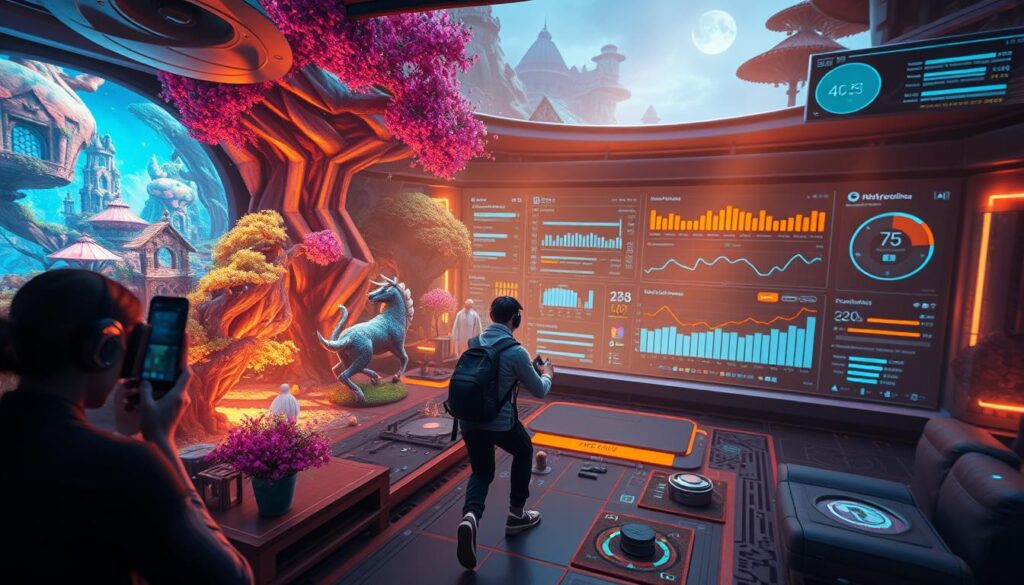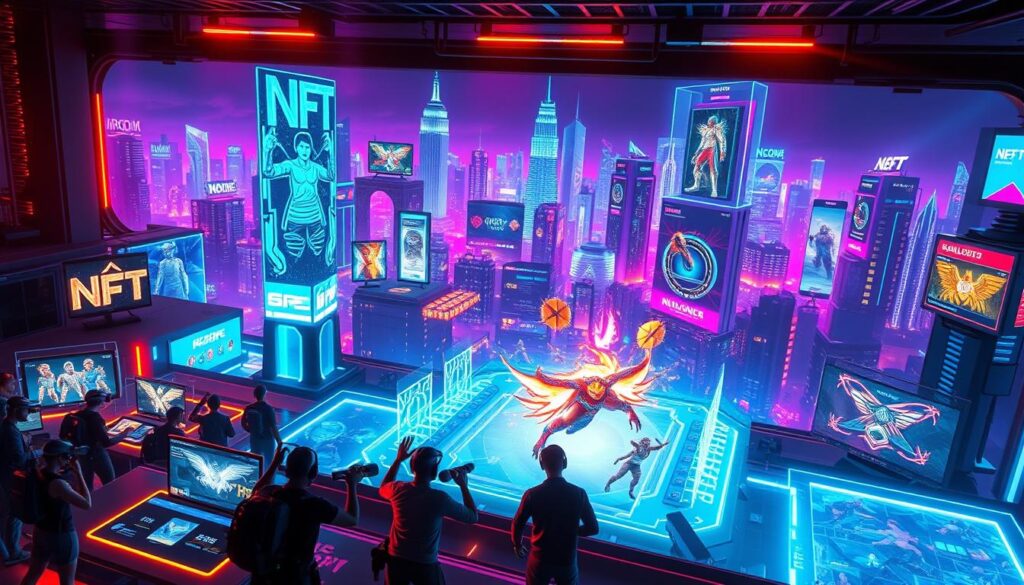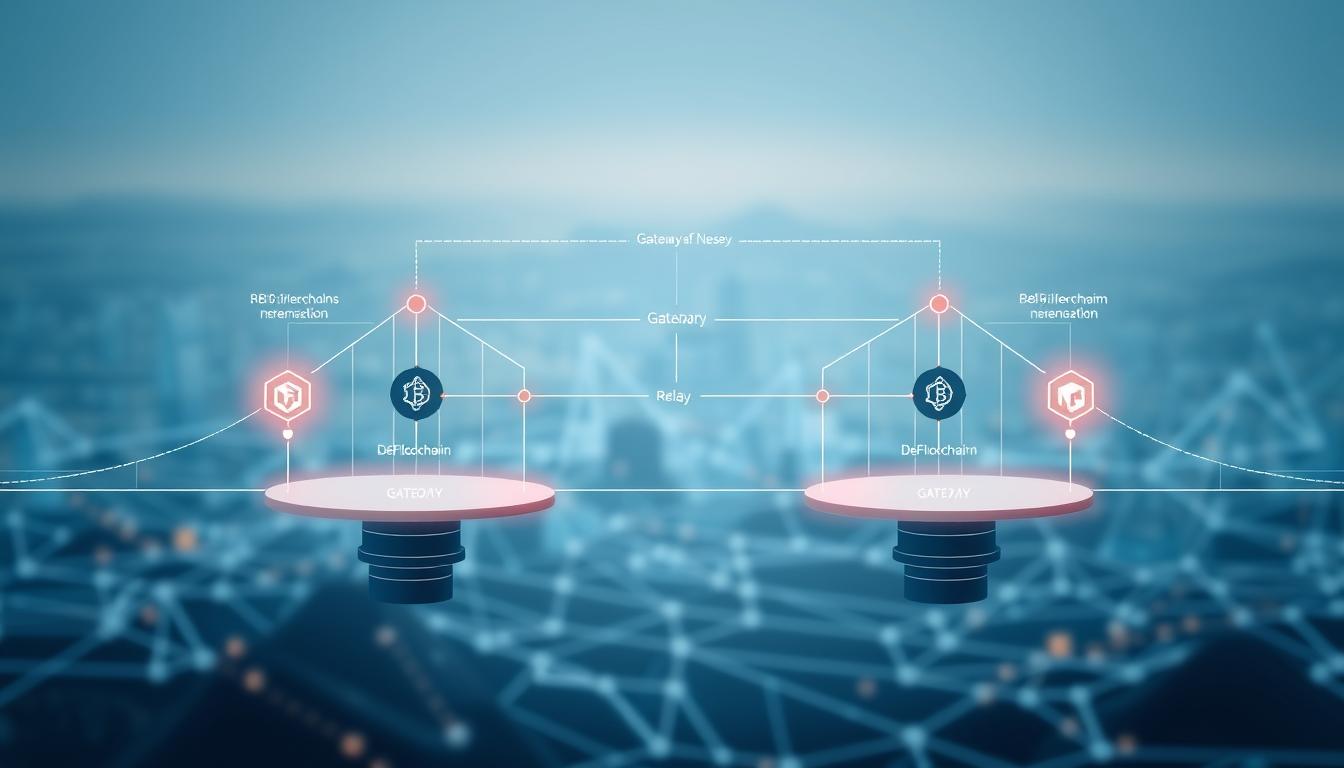Now Reading: Daily NFT Treasure Hunt Game: Earn Free Crypto Rewards
- 01
Daily NFT Treasure Hunt Game: Earn Free Crypto Rewards
Daily NFT Treasure Hunt Game: Earn Free Crypto Rewards

A new wave of interactive entertainment is captivating a global audience. These activities merge fun challenges with the power of blockchain technology. Players can now participate in engaging experiences that offer tangible digital value.
The core concept is simple yet powerful. Participants search for hidden digital items within a virtual environment. Successfully completing these challenges results in earning digital currency. This creates a rewarding loop of exploration and achievement.
This model has gained significant traction among tech-savvy enthusiasts. The appeal lies in combining entertainment with potential financial benefits. The integration of unique digital assets provides true ownership for participants. This enhances the entire experience beyond traditional game mechanics.
This guide will help you understand this exciting landscape. We will explore how to get started and maximize your involvement. The potential to accumulate value over time makes this an attractive option for many.
Key Takeaways
- Interactive blockchain activities combine entertainment with potential earnings.
- Participants explore virtual worlds to find hidden digital collectibles.
- Successful completion of challenges grants digital currency.
- True ownership of assets is a key benefit of this model.
- This guide provides a comprehensive overview for new participants.
- The accessibility of these activities attracts a wide range of players.
Overview of the Daily NFT Treasure Hunt Game and Its Impact
The landscape of digital entertainment is undergoing a fundamental shift. Interactive platforms now blend enjoyment with real economic value creation. This evolution represents a significant departure from traditional models.
Introduction to Play-to-Earn Concepts
Play-to-earn mechanics revolutionize how participants engage with digital worlds. Instead of purely recreational activities, these systems offer tangible value for time and skill. Players receive digital assets that hold real-world worth.
This model creates sustainable economic opportunities through various achievements. Activities within these environments distribute valuable digital tokens. The system rewards consistent participation and strategic gameplay.
Market Trends and User Engagement
Industry data reveals explosive growth in blockchain-based entertainment. DappRadar reported that half of all blockchain activity came from these platforms in 2022. By 2023, they demonstrated 34% dominance across the entire industry.
User engagement metrics show remarkable adoption patterns. Gaming has become the primary driver for new wallet creations on blockchain networks. This indicates massive mainstream interest in earning digital currencies.
The consistent nature of treasure hunt mechanics enhances user retention. Regular opportunities to acquire value create engaging participation loops. Even small daily acquisitions can accumulate into significant holdings over time.
Understanding the Play-to-Earn Crypto Gaming Trend
User adoption for digital currencies is being driven primarily by engaging, reward-based interactive platforms. This trend demonstrates how entertainment can serve as a powerful gateway to broader blockchain ecosystems.
Blockchain Gaming Metrics and Growth
Industry data confirms the massive scale of this movement. DappRadar reported that in 2022, about half of all blockchain activity originated from these interactive platforms.
Their dominance continued into 2023, maintaining a strong 34% share across the entire industry. This consistent performance highlights the sector’s stability and appeal.
The landscape in 2025 shows rapid expansion with new titles launching regularly. This continuous development offers players an ever-widening array of opportunities.
New Wallet Developments on the Blockchain
Gaming has become the strongest catalyst for new wallet creation. It introduces millions of users to digital assets who might otherwise not engage.
Wallet development has accelerated to meet this demand. Interfaces are now simpler and security is enhanced, making the technology more accessible.
This ease of access is crucial for mainstream adoption. It allows people to focus on enjoyment while learning how to acquire digital currency without mining.
| Network | Primary Focus | Notable Feature |
|---|---|---|
| Ethereum | Established Ecosystem | Wide variety of existing titles |
| Binance Smart Chain | Cost-Efficiency | Lower transaction fees for users |
| Emerging Platforms | Gaming & Mining Optimization | Built specifically for high performance |
How Players Earn Free Crypto Rewards in NFT Games
A primary attraction of modern digital worlds is the direct path from participation to profit. Users engage with various mechanics designed to distribute value for their time and skill.
In-Game Earning Methods and Mechanics
There are several primary ways players earn digital assets. These include completing specific tasks, reaching milestones, and regular participation in activities.
Simple systems might offer rewards for daily logins. More complex ones require strategic gameplay to unlock valuable items and tokens.
The accumulation of value happens gradually. Consistent effort over time is the most reliable way to build a portfolio of digital assets.
| Method | Player Action | Typical Reward |
|---|---|---|
| Task Completion | Finishing quests or challenges | Native game tokens |
| Milestone Achievement | Reaching level caps or goals | Unique NFTs or rare items |
| Daily Participation | Logging in and basic engagement | Small amounts of cryptocurrencies |
Earned assets have dual utility. They can be used within the games for upgrades or traded on external exchanges. Withdrawal to a personal wallet converts gameplay into tangible value.
This cycle turns entertainment into an opportunity. Players earn rewards while enjoying engaging experiences, creating a powerful incentive model.
daily NFT treasure hunt game free crypto rewards
The appeal of earning digital assets through regular interactive activities continues to grow. These systems offer a unique blend of entertainment and potential value accumulation for participants.
This model stands out for its approachable nature and engaging mechanics. Let’s explore the core benefits and how value is distributed.
Key Advantages for Players
One significant advantage is immediate accessibility. Many activities require no initial financial commitment. This allows new participants to start building their portfolios right away.
Regular engagement opportunities create a consistent path for accumulation. The gamified elements, like scratch cards or point systems, make the process enjoyable. This turns routine participation into an entertaining experience.
Platforms like Bybit demonstrate this well. Their system lets users check in to earn points and unlock prizes. It’s a fun method that encourages daily involvement.
Reward Distribution Models
Different systems use various methods to allocate value. Understanding these models helps participants strategize their involvement effectively.
Some offer fixed allocations for simple actions like logging in. Others provide variable prizes based on performance or luck. Tiered systems reward consistent, long-term engagement with better opportunities.
These models aim to create a balanced ecosystem. They ensure sustainability for the platform while providing real value to its community of participants.
| Model Type | Core Mechanism | Player Benefit |
|---|---|---|
| Fixed Daily | Set allocation for completing a basic task | Predictable, consistent earnings |
| Performance-Based | Prizes scale with achievement level | Rewards skill and effort |
| Luck-Based Discovery | Randomized prizes from hidden items | Adds excitement and surprise |
| Tiered System | Improved rewards for loyalty and level | Incentivizes long-term participation |
Top NFT Gaming Platforms for Earning Crypto Rewards
Several leading interactive environments have emerged as frontrunners in the play-to-earn ecosystem. These platforms offer diverse experiences while providing tangible value for participants.
Farmers World & Alien Worlds Overview
Farmers World operates on the WAX blockchain with over 150,000 participants worldwide. This virtual farming experience uses FOOD, WOOD, and GOLD tokens for tool creation and equipment maintenance.
Alien Worlds spans multiple networks including Ethereum and Binance Smart Chain. The system features six distinct worlds with 500 land plots available for mining Trilium tokens using provided shovels.
Upland, The Sandbox, and Other Notable Titles
Upland builds on the EOS blockchain with virtual properties mirroring 17 U.S. cities. The Sandbox offers a community-driven metaverse on Ethereum powered by its native SAND token.
Axie Infinity combines breeding mechanics with strategic card-based battles. Participants form teams of three digital creatures for both PvE and PvP modes, historically earning 150-200 SLP tokens daily.
Diverse Platforms and Their Unique Rewards
Additional platforms like Splinterlands focus on card battles while Gods Unchained emphasizes strategic gameplay. Each system creates distinct user experiences through specialized reward structures.
These varied approaches demonstrate how different platforms cater to diverse interests. From mining operations to virtual real estate, each offers unique pathways for value accumulation.
Blockchain and Cryptocurrency Incentives in Gaming
Blockchain technology is fundamentally reshaping how platforms create player incentives. These systems leverage cryptocurrency rewards to build sustainable economic ecosystems. The integration creates new possibilities for digital ownership and value distribution.

Play-to-Earn Mechanisms in Detail
Players earn rewards through various engagement methods in blockchain games. Task completion often grants native tokens that hold real-world value. Milestone achievements provide unique digital assets with tangible worth.
Performance-based systems reward skill and dedication with valuable cryptocurrencies. These ways earn differ from traditional in-game currency models. Blockchain verification ensures true ownership of all acquired assets.
Onboarding Bonuses and Airdrop Programs
Many platforms offer sign-up incentives ranging from $10 to $50 in digital currency. These bonuses typically require identity verification or initial trading activity. The terms may include specific holding periods or activity thresholds.
Airdrop programs distribute free tokens to community members and early adopters. Participants receive these engagement rewards for completing simple tasks. The value accumulates meaningfully over time through consistent participation.
| Program Type | Requirements | Typical Value |
|---|---|---|
| Onboarding Bonus | Identity verification + initial trade | $10-$50 in BTC/ETH |
| Airdrop Distribution | Wallet ownership + task completion | Variable token amounts |
| Learn & Earn | Educational tutorial completion | Project-specific tokens |
| Engagement Rewards | Regular platform activity | Accumulating value over time |
Educational platforms combine knowledge acquisition with cryptocurrency rewards. Users complete tutorials about blockchain projects to earn tokens. This model benefits both participants and the developing ecosystem.
The Role of NFTs and Digital Ownership in Play-to-Earn Games
Digital collectibles are revolutionizing player interactions with virtual environments. Unlike traditional systems where developers control all content, blockchain technology enables true ownership of in-game items.
This fundamental shift creates new economic opportunities for participants. Players can now build portfolios of valuable digital assets that retain worth beyond gameplay sessions.
NFT Ownership Benefits for Gamers
Non-fungible tokens represent unique characters, items, and virtual properties. Each token is verifiably distinct and cannot be replicated. This scarcity creates inherent value beyond mere utility.
Platforms demonstrate this ownership model effectively. In this popular title, every creature is a unique digital asset that can be bought or sold. The marketplace functionality allows players to monetize their collections.
True ownership extends to user-generated content as well. The platform features virtual land parcels represented as digital certificates. Owners can develop experiences and sell access to other participants.
Games like Shrapnel implement comprehensive ownership systems. Everything collected or crafted becomes player property through blockchain verification. This enables free trading, selling, or even renting gear to others.
Collectible cards gain value from scarcity and demand. Rare items appreciate based on market dynamics rather than gameplay alone. Understanding when to hold versus trade becomes crucial for maximizing returns.
This model benefits gamers by creating lasting value. Digital assets remain in player control even after stopping participation. The system empowers users to build meaningful portfolios through strategic engagement.
Enhancing User Experience through Gameplay and Strategy
Contemporary virtual environments focus on creating intuitive experiences that balance enjoyment with strategic complexity. Platforms continuously refine their interfaces and mechanics to keep participants engaged over extended periods.
User Interface Innovations and Accessibility
Recent technical advancements have dramatically improved how users interact with digital worlds. Decentraland’s October 2024 desktop client release significantly enhanced performance and graphics quality.
This upgrade created a more immersive experience for all participants. The improved fluidity allows for smoother navigation and interaction.

Simplified onboarding processes reduce technical barriers for new users. Cross-platform compatibility ensures accessibility regardless of device preference.
Effective Strategies for Winning Rewards
Strategic thinking becomes crucial for maximizing returns in competitive environments. Understanding battle mechanics and PvP dynamics can significantly improve success rates.
Resource management in strategy titles requires careful planning over time. Choosing optimal farming routes in world exploration games increases efficiency.
The community often develops shared tactics that help newcomers improve their gameplay. This collective knowledge benefits all participants seeking to enhance their performance.
| Game Style | Primary Focus | Key Strategy |
|---|---|---|
| Combat-Focused | Battle Optimization | Timing attacks and defense cycles |
| Resource Management | Efficiency Planning | Balancing short-term and long-term gains |
| Exploration-Based | Route Optimization | Identifying high-value areas quickly |
Strategies for Maximizing Crypto Rewards in Daily NFT Games
Strategic planning significantly enhances your potential returns from interactive blockchain activities. This approach helps players navigate the landscape efficiently.
It is crucial to combine earning methods based on your skill level. Start with simple signup bonuses before advancing to more complex activities.
Tips for Beginners Entering the NFT Space
Newcomers should begin with free-to-play titles. A small investment, like the $10 Summoner’s Spellbook in Splinterlands, can unlock significant earning potential.
Focus on mastering one or two factions when building your deck. This strategy helps you learn specific card synergies effectively.
Active participation is key. Completing daily quests and joining tournaments helps players earn more and improve their skills over time.
Advanced Reward Optimization Techniques
Experienced players diversify their activities across multiple games. This spreads risk and increases the total crypto you can accumulate.
In titles like Axie Infinity, optimal battle selection in PvP modes is essential. Understanding the economy helps identify the most valuable items to farm.
Track vesting schedules and withdrawal thresholds for your tokens. This ensures you claim your rewards efficiently without losing value to fees.
Security and Trust in Blockchain Gaming
Security measures form the foundation of trust in interactive blockchain environments. Participants must prioritize protecting their digital assets from potential threats. Understanding proper safety protocols ensures a positive experience.

Ensuring Wallet and Transaction Security
Players should maintain separate wallets for different activities. Use one for interactive platforms and another for long-term holdings. This approach minimizes risk exposure across various platform engagements.
Always enable two-factor authentication on your accounts. Create unique, strong passwords for each service you use. These basic steps significantly enhance your protection against unauthorized access.
Verify smart contract addresses before interacting with them. Double-check website URLs to avoid phishing attempts. Withdraw accumulated balances to secure storage regularly to protect your earnings.
Mitigating Scam and Fraud Risks
Research any platform thoroughly before investing time or resources. Look for established communities and transparent development teams. Choose services with proven track records rather than unverified opportunities.
Be cautious of unrealistic reward promises that seem too good to be true. Fake airdrops and phishing websites often target unsuspecting users. Always verify legitimacy through official channels.
Opt for platforms with industry-standard security features. These include cold-storage custody and multi-signature wallet requirements. Regular third-party audits demonstrate commitment to user protection.
Free-to-Play versus Pay-to-Play Models in NFT Gaming
The economic structure of interactive platforms varies significantly between accessible and investment-based models. Participants must understand these differences to choose options matching their financial comfort level.
Evaluating Initial Investment and Accessibility
Some platforms require zero upfront money. Alien Worlds only needs a WAX account to begin. This makes it highly accessible for newcomers.
Other titles demand substantial capital. Farmers World requires $500+ for tools and staking. Mid-tier options like Splinterlands need a $10 purchase to unlock full features.
Players need to assess token utility carefully. Upland’s UPX currency cannot be redeemed for traditional money. This represents significant risk in investment terms.
Free-to-play gaming eliminates financial risk entirely. Pay-to-play models often offer higher earning potential. New participants should start with accessible options to learn mechanics.
Understanding these differences helps players make informed decisions. The right choice depends on individual financial situations and goals.
Emerging Trends in Metaverse and NFT Gaming
Forward-thinking platforms are merging physical and digital realities in unprecedented ways. These innovations transform how participants interact with virtual environments.

The landscape extends beyond traditional screen-based activities. Platforms create persistent digital spaces where users maintain true ownership.
Integration of AR/VR Experiences
The Nemesis represents this convergence by uniting gaming with virtual and augmented reality. Users enjoy immersive experiences across desktop and mobile devices.
This approach bridges the gap between entertainment and everyday life. Location-based activities blend digital collectibles with real-world exploration.
Decentraland’s October 2024 desktop client upgrade demonstrates performance improvements. Enhanced graphics create more engaging virtual world interactions.
Innovative Future Game Developments
Voxels enables users to build on land parcels represented as digital certificates. This user-generated content model empowers creative expression.
Cross-platform compatibility ensures seamless access across devices. Participants maintain asset ownership whether using mobile, desktop, or VR equipment.
Development trends focus on interoperability between different virtual environments. Characters and items gain utility moving between various gaming experiences.
These advances create earning opportunities beyond traditional gameplay. Virtual real estate development and event hosting become viable income streams.
Fostering Community Engagement in Crypto Gaming
Community-driven experiences now form the core of player retention in modern digital environments. These interactive spaces transform individual activities into shared adventures with lasting social value.
Platforms like Decentraland demonstrate this through their decentralized governance system. Players participate in decision-making processes that shape the virtual world’s development.
Social Interactions, Tournaments, and Leaderboards
Large-scale events create memorable shared experiences. The Decentraland Music Festival attracted diverse audiences, showcasing the platform’s event-hosting capabilities.
Competitive structures like tournaments and leaderboards drive engagement. Players test skills in PvP battles while climbing rankings for recognition.
Creation tools empower users to contribute meaningful content. Shrapnel allows participants to design maps and game modes that integrate into the ecosystem.
Card-based communities foster strategic collaboration. In titles like Axie Infinity, players exchange deck-building tips and trading strategies.
| Platform Type | Social Feature | Community Benefit |
|---|---|---|
| Metaverse Worlds | Virtual Events | Shared experiences and networking |
| Strategy Games | Tournament Systems | Skill recognition and competition |
| Creation-Focused | User-Generated Content | Creative expression and ownership |
| Card Battlers | Trading Communities | Strategy sharing and market activity |
Active community participation often leads to enhanced earning opportunities. Engaged players discover new strategies and exclusive rewards through social connections.
How Tokenomics Drive Game Development and Player Rewards
Token economics serve as the backbone of sustainable value creation within blockchain-based entertainment ecosystems. These economic models determine how digital assets circulate and maintain worth over time.
Utility and Functions of In-Game Tokens
Different tokens serve distinct purposes within virtual environments. The Sandbox uses SAND as its primary currency for purchases, with a fixed supply of 3 billion tokens. This scarcity helps maintain value.
Governance tokens like GFLY give participants voting rights on platform decisions. Resource tokens such as Farmers World’s FWW, FWF, and FWG enable specific activities like wood, food, and gold mining.
Impact on Gameplay and Reward Structures
Token supply mechanics significantly influence long-term value. Fixed-supply tokens may appreciate over time, while unlimited-supply tokens risk inflation. This directly affects player earnings.
Well-designed tokenomics create sustainable reward structures where participant holdings maintain value. Poor models can lead to price crashes that eliminate earning potential. Token utility beyond basic gameplay is crucial for lasting value.
Players should evaluate token transparency, supply mechanisms, and external utility when choosing platforms. Understanding these economic principles helps maximize returns and avoid unsustainable systems.
Real-World Monetary Impact of Crypto Rewards on Players
Digital assets earned through interactive platforms now translate into real-world financial value. This bridges the gap between entertainment and economic empowerment for participants.
Conversion of Tokens into Fiat Value
Participants convert earned digital assets into traditional money through exchanges. They transfer tokens to platforms, trade for stablecoins or major cryptocurrencies, then withdraw to bank accounts.
Historical data shows significant earning potential. Axie Infinity players could earn 150-200 SLP tokens daily. This translated to approximately $20-$27 in real value.
Earnings depend on multiple factors. Player skill, time investment, and market conditions all influence final returns.
Influence on Investment and Trading Decisions
Successful creators in platforms like The Sandbox have generated substantial income. They sell digital assets and experiences on marketplaces for real money.
Financial considerations are crucial. Digital rewards are typically treated as taxable income when received. Proper documentation and reporting are essential.
| Strategy Type | Time Requirement | Financial Impact |
|---|---|---|
| Supplemental Income | Moderate participation | Consistent modest earnings |
| Primary Income Source | Dedicated full-time effort | Significant financial returns |
| Asset Reinvestment | Strategic planning | Portfolio growth over time |
Track vesting schedules and withdrawal thresholds carefully. This ensures efficient token claiming and maximizes value when market conditions favor selling.
These earnings influence broader financial decisions. Some participants reinvest in additional digital assets. Others diversify into traditional investment opportunities.
Conclusion
Modern gaming ecosystems have transformed players from passive consumers into active stakeholders. This shift represents a fundamental change in how digital entertainment creates value.
These interactive platforms offer a compelling dual benefit. They provide engaging entertainment while enabling financial growth through crypto earnings. However, players should approach with realistic expectations about entry requirements and competition levels.
The integration of blockchain technology and nfts ensures true digital ownership. This creates sustainable economic models where time and skill investments yield tangible rewards.
As the ecosystem evolves through 2025, new opportunities will continue emerging. Starting with accessible options allows gradual skill development while minimizing risk. The future promises even more innovative ways for participants to benefit from their engagement.
This transformative approach to interactive entertainment marks just the beginning. It empowers users to become valued contributors rather than mere participants in digital worlds.
FAQ
What is a play-to-earn game?
A play-to-earn game is a type of experience where participants can receive digital assets or cryptocurrencies for their time and effort. These blockchain-based games allow users to gain actual value through activities like winning battles, completing quests, and trading items.
Do I need to spend money to start playing?
Many platforms offer free-to-play models that let you begin without an initial purchase. However, some titles may require a small investment in starter assets, like cards or characters, to fully access earning potential. It’s important to research each platform’s specific requirements.
How do I receive my rewards?
Earnings are typically distributed directly to your connected digital wallet. These tokens can often be held, used within the game’s ecosystem for upgrades, or traded on external exchanges for other currencies, providing real-world monetary impact.
Are these games secure?
Reputable platforms use blockchain technology to ensure transparency and security for transactions and ownership of assets. Always use official links, secure your wallet with strong passwords, and enable two-factor authentication to protect your items and currency.
What kind of strategy is involved?
Success often depends on a mix of skillful gameplay, smart resource management, and understanding the game’s economy. Effective strategies might involve forming guilds, specializing in certain tasks, or mastering Player vs. Player (PvP) battles to maximize your income.
Can I trade the items I earn?
Yes, a core feature of these experiences is true digital ownership. The non-fungible tokens (NFTs) you acquire, such as characters, land, or items, are your property. You can typically sell or trade them on marketplaces, giving your gameplay tangible value.












